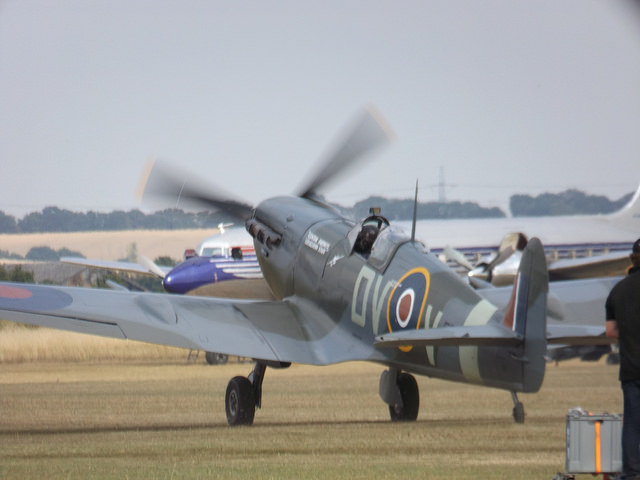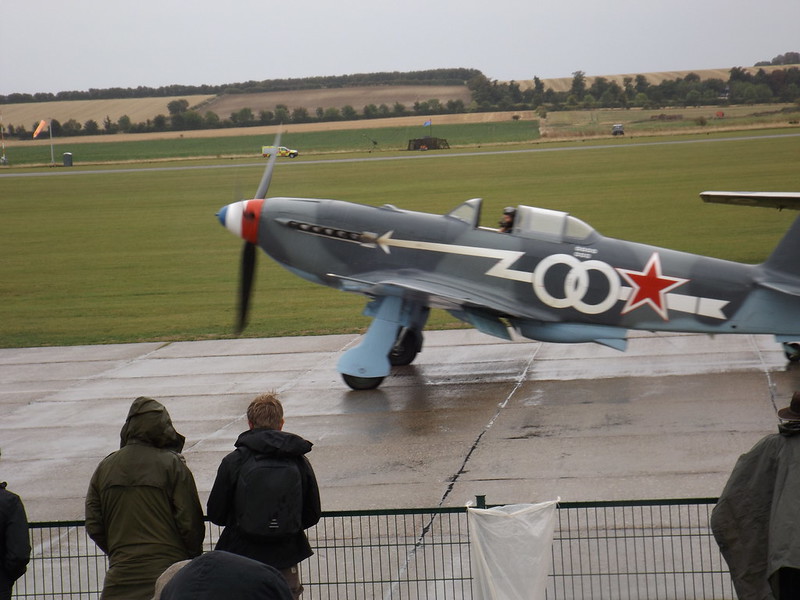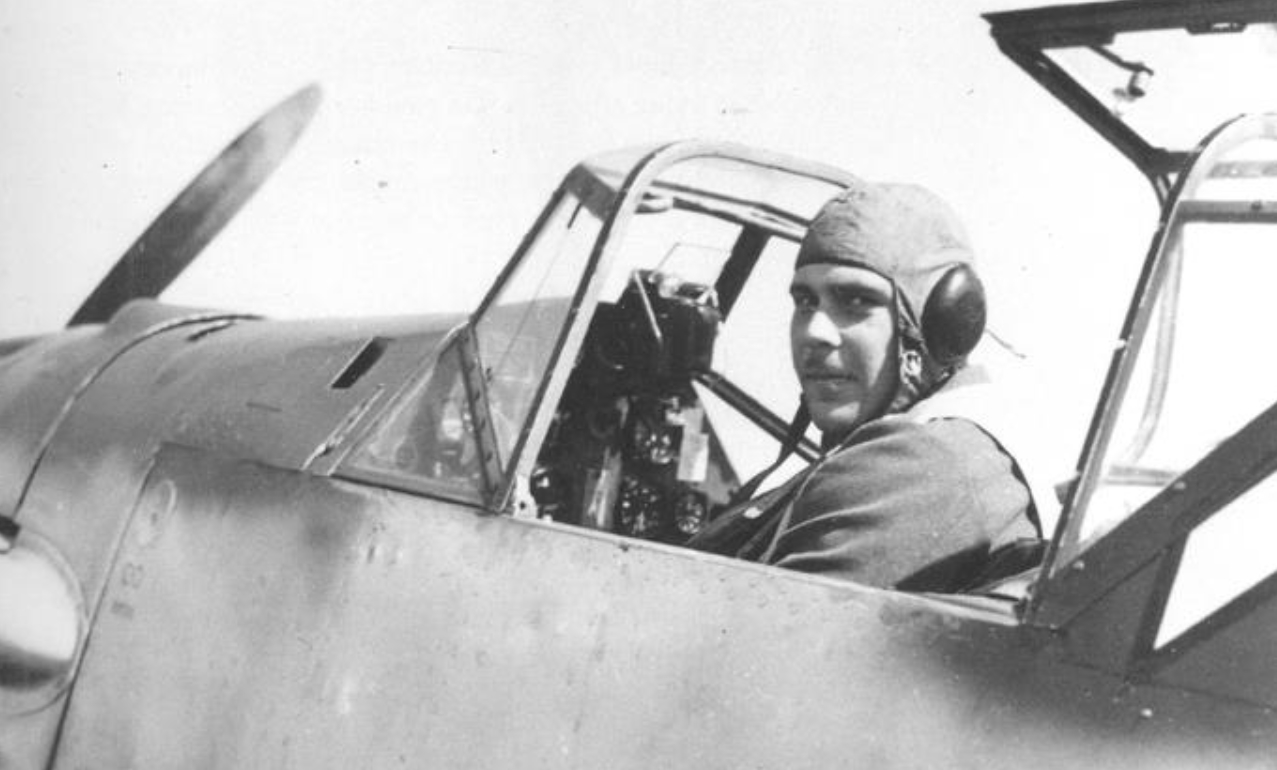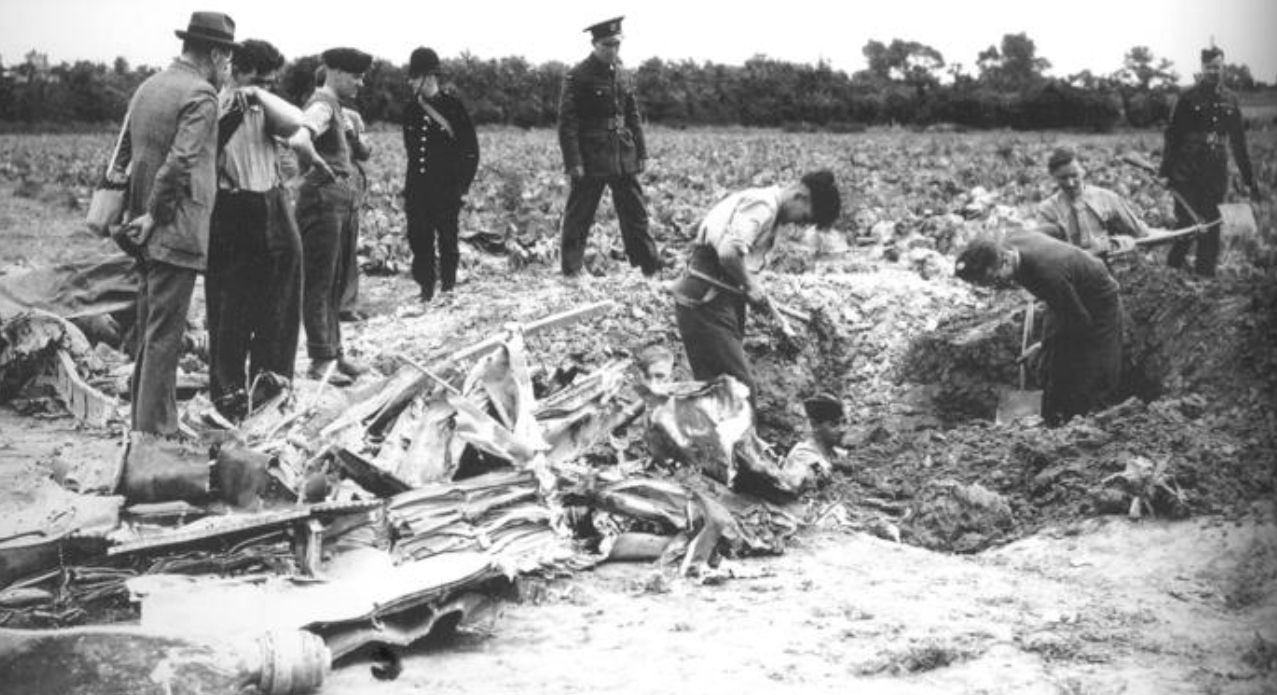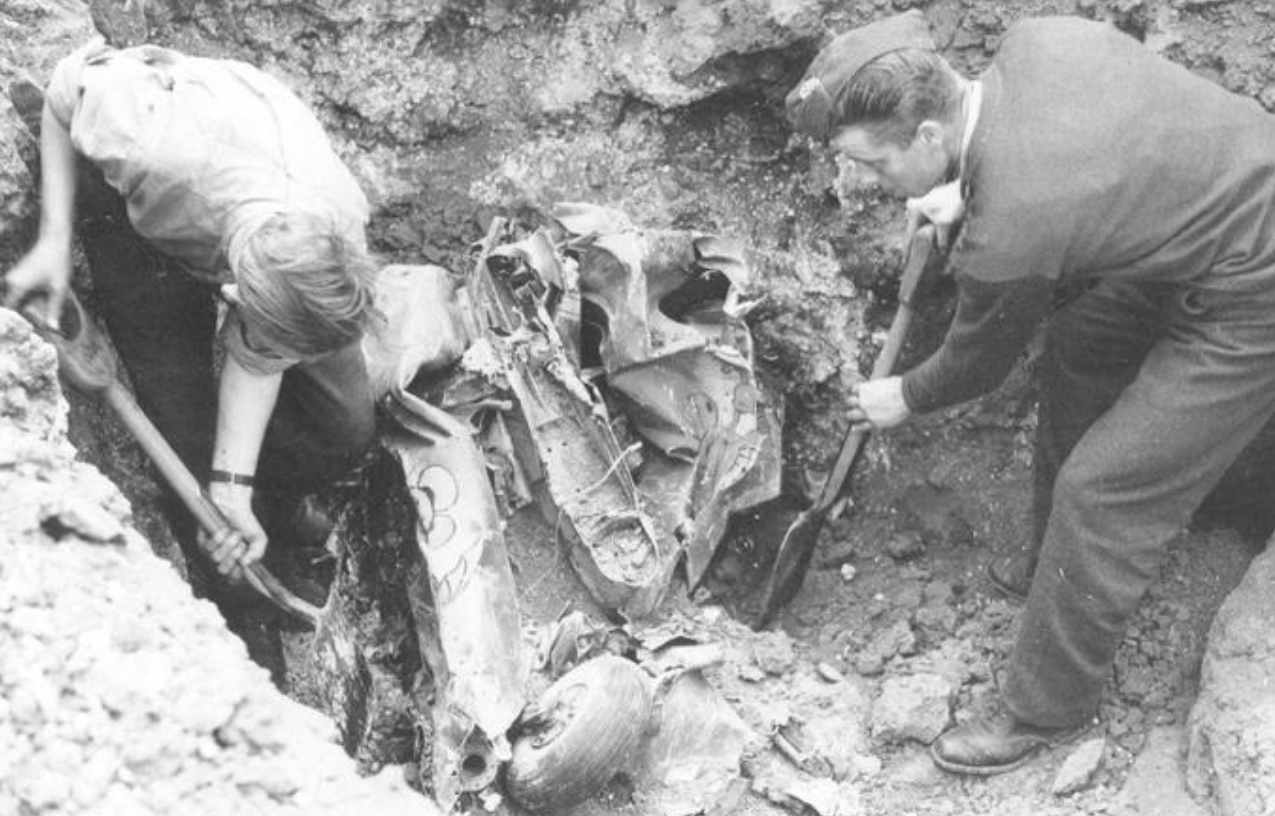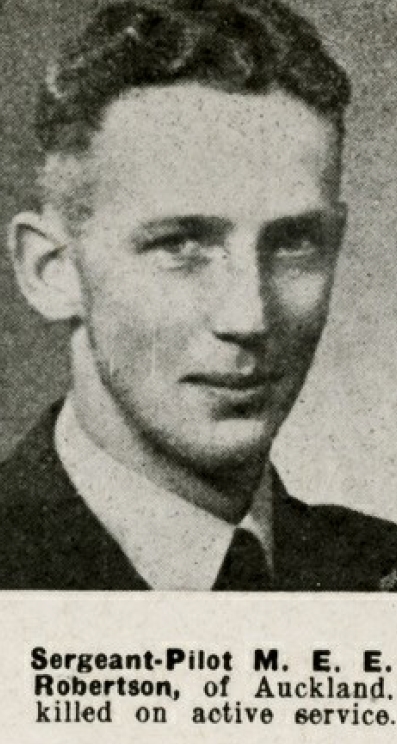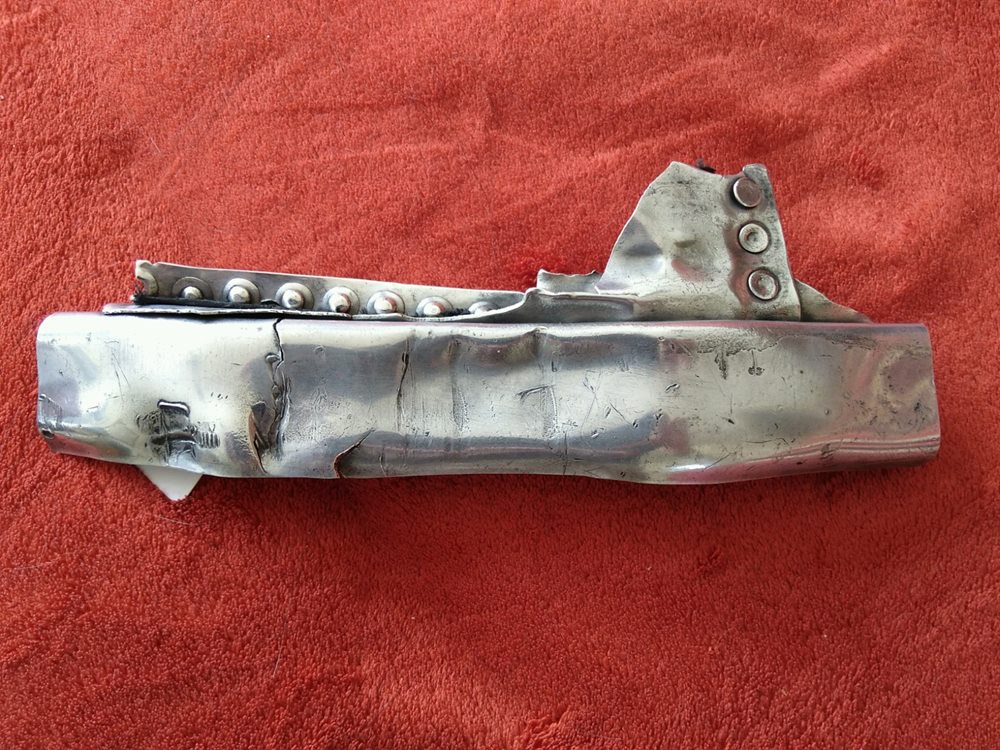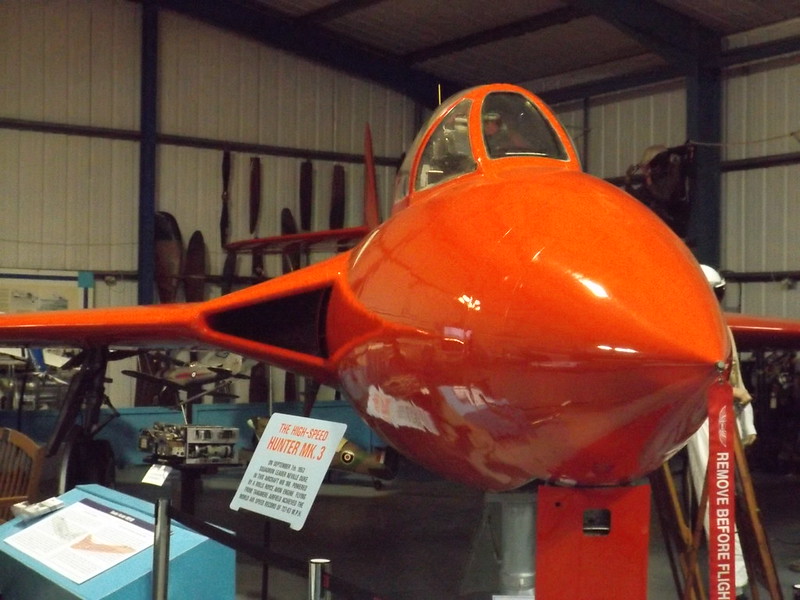
The Second World War resulted in the deaths of around 85 million people. Additionally, tens of millions more people were displaced. However, amid all the carnage people demonstrated remarkable courage, fortitude, compassion, mercy and sacrifice. We would like to honour and celebrate all of those people. In the War Years Blog, we examine the extraordinary experiences of individual service personnel. We also review military history books, events, and museums. And we look at the history of unique World War Two artefacts, medals, and anything else of interest.
HURRICANE: The poignant biography of the plane that won the war.
HURRICANE: The Plane That Won the War by Jacky Hyams tells the story of the Hawker Hurricane and the people who designed it, built it, fought in it, and maintained and repaired it. Read the full book review now.
One British aircraft of the Second World War has come to symbolize the indomitable spirit of the nation during the dark days of 1940, the Supermarine Spitfire. However, it was the Hawker Hurricane that shot down more than half of the Luftwaffe’s raiders during the Battle of Britain. In Jacky Hyams’s new book, HURRICANE: The Plane That Won the War, published by Michael O’Mara Books Limited, the bestselling author attempts to set the record straight.
HURRICANE is an account of how the aircraft was designed, built and its service history. The book is also a testament to the pilots, the Air Transport Auxiliary, the ground crews, and the many unsung heroes of the production line. The stubby Hawker Hurricane or ‘Hurri’ as it was affectionately known was the brainchild of entrepreneurial aircraft manufacturer Sir Tommy Sopwith and Chief Designer, Sir Sydney Camm. Today, Camm is largely forgotten while the name of R.J. Mitchell, the designer of the Spitfire, is familiar to many. Yet, Camm would lead the design teams of the Hawker Typhoon, Hawker Tempest, and the post-war marvel, the Hawker Siddeley Harrier ‘jump jet’.
The Hurricane was the first monoplane fighter to enter service with the RAF, although the Bristol M1 was briefly in service at the end of the First World War. Partially constructed from wood and canvas, the Hurricane was quicker and cheaper to manufacture than its more glamorous stable mate, the Spitfire. The Hurri was also a more rugged aircraft, capable of withstanding Luftwaffe punishment that the Spitfire could not. The aircraft’s simple design meant that during the critical days of the Battle of Britain, seemingly unrepairable planes were patched up and put back into service by maintenance units. By the 15th of September 1940, the Hawker Hurricane had shot down more enemy aircraft than all other types of RAF aircraft and anti-aircraft (AA) guns put together.
Using a combination of archive materials and first-hand accounts, Jacky Hyams’s book retells more than just the history of the Hawker Hurricane. It is a book about the countless human stories of quiet courage, sacrifice, hard work, and emotional strain that the factory workers, pilots, and ground crews endured throughout the Second World War. The author keeps the technical jargon and military acronyms to a minimum, and when used she provides short, concise explanations.
Over the post-war period, the Hurri has proven fertile ground for authors, historians, and aircraft enthusiasts with over a hundred books and articles published on the subject. So, it might be fair to say there isn’t too much new to say about the fighter. Nevertheless, Jacky Hyams’s book is engaging, easy to read, poignant, and informative in turn.
By the end of its operational life, the Hawker Hurricane had served in every major theatre of the Second World War and flown with numerous air forces from Australia to Yugoslavia. Around 25 different variants of the aircraft were eventually produced, from Hawker Sea Hurricane to tank-busting ground attack aircraft. Together with the countless men and women who gave themselves so tirelessly to defeat tyranny perhaps Sir Sydney Camm’s stubby little aircraft, the Hawker Hurricane, was the plane that won the war.
D-Day 75: Daks Over Duxford
Watch our highlights video of the IWM Duxford’s Daks Over Duxford event as part of the 75th-anniversary commemorations of the D-Day landing of June 6 1944. The largest collection of Douglas C-47 Skytrain and DC-3 aircraft since World War Two. Ten aircraft flew sticks of paratroops over to Normandy for a mass parachute drop. We have also published 57 photos from the Daks Over Duxford event.
As part of IWM’s D-Day 75th anniversary week, Daks over Duxford told the extraordinary story of D-Day, uniting the greatest number of Douglas C-47 Skytrain and Dakota aircraft in one location since the Second World War. Synonymous with the D-Day Landings, more than 30 'Daks' descended upon IWM Duxford.
Mass parachute jumps and flight displays took place across the museum ahead of the epic cross-channel flight to Normandy on 5 June. On the ground, D-Day-related displays and activities brought the extraordinary story of D-Day to life.
In fact, 21 DC-3s and Douglas C-47s finally went to Normandy, ten of the aircraft carrying sticks of paratroopers for a mass drop as part of the Daks Over Normandy commemorations across the Channel. In reality, 1200 Douglas C-47s were used for D-Day. As well as the Daks, a P-47 Thunderbolt, two Mk 9 Spitfires and two P-51 Mustangs performed aerial displays. There was also a very impressive flypast by a collection of USAF C-130s and V-22 Osprey modern aircraft.
DDay 75: Daks Over Duxford Photography
Spitfire September
In this post, we review a Spitfire September. First, we take a look at the new Spitfire documentary film. Next, the Battle of Britain Air Show at IWM Duxford, and finally, John Nichol’s book, Spitfire: a Very British Love Story. Tally-Ho!
The 15th of September is Battle of Britain day. It commemorates a turning point in the struggle for aerial supremacy in the skies over Britain fought by the RAF and German Luftwaffe during the summer and autumn of 1940. German daylight raids would eventually cease by the end of October, and Operation Sealion, the German codename for the amphibious invasion of southern England, would be cancelled. It was Nazi Germany’s first significant defeat. A victory won by a handful of daring pilots from across the globe and two iconic aircraft: the Hawker Hurricane and Supermarine Spitfire. However, one aircraft would go on to capture the hearts and imagination of the nation. Since 1940, the Spitfire has become an enduring symbol of courage, fortitude, ingenuity and Britishness.
Spitfire – Inspiration of a Nation
My own little September love affair with the Spitfire started with the release of the documentary film Spitfire – Inspiration of a Nation, directed by David Fairhead and Ant Palmer. Narrated by Charles Dance, the film is a biography of both the aircraft and the men and women who flew it. The original music score by composer Chris Roe and mesmerising aerial photography by director John Dibbs work beautifully together. The film was the last onscreen interview given by Battle of Britain fighter pilot and author Geoffrey Wellum, DFC. The film is also the last testament of Mary Ellis, who flew 76 different types of aircraft during the war as part of the Air Transport Auxiliary (ATA). Ferrying aircraft between factories and operational squadrons, the ATA played a vital support role. During her career, Mary delivered over 400 Spitfires safely to their destinations. The film also features a sound recording of aero engineer and chief designer of the Spitfire, R.J. Mitchell, who died of cancer before his creation went into service. Spitfire is a great piece of documentary film-making, and definitely worth the purchase price.
Battle of Britain Air Show
The last event to mark the centenary of the RAF’s first 100 years, the Battle of Britain Air Show was held at the IWM Duxford on the 22nd and 23rd of September, 2018. Unfortunately, the weather on Saturday was extremely challenging with heavy, persistent rain all afternoon. Nevertheless, the event organisers, aircraft owners and pilots did an excellent job. The show told the history of the RAF from its founding at the end of World War One to the modern day. Highlights of the display included two de Havilland Vampire jets, Battle of Britain Memorial Flight (Spitfire, Hurricane and Lancaster), a 617 Squadron flypast (Tornado GR4, new F-35 Lightning II and Avro Lancaster) and the Red Arrows. The show closed with a formation of 18 Spitfires. We also got to see iconic warbirds such as the P-51D Mustang, Boeing B-17 Flying Fortress, Catalina seaplane, Westland Lysander and Soviet Yak 3. Sadly, the MiG-15 was not able to fly due to adverse weather conditions. The Battle of Britain Air Show was a very impressive event, and one I would highly recommend. There’s nothing like seeing 18 Spitfires take to the sky, and listening to the combined roar of all those Merlin and Griffon engines.
Spitfire: a Very British Love Story
Finally, I finished my Spitfire September by reading John Nichol’s book Spitfire: a Very British Love Story. A former RAF pilot, John Nichol knows a thing or two about aerial combat. During the 1991 Gulf War, he was shot down, captured and tortured by Iraqi forces. His book examines the Spitfire’s origins and continued development during the war years when the threat from new enemy aircraft demanded constant innovation. When the Spitfire was finally retired from RAF service in 1957 there had been 47 variants including the Fleet Air Arm’s Seafires. However, the book is really a collection of stories about the different roles the Spitfire played in the lives of frontline pilots such as Allan Scott and Hugh ‘Cocky’ Dundas, and ATA pilots like Diana Barnato Walker. Sadly, unlike the beloved Spitfire, the veterans of the conflict do not endure. John Nichol interviewed around 40 veterans over a three-year period of research and writing his book. By the time it was published only three were still with us. Soon the “greatest generation” will be gone forever, but while Spitfires continue to fly, let us hope they will never be forgotten.
Fragments of Triumph and Tragedy
In this blog, we look at two fragments of World War Two aviation history, one a German Luftwaffe Bf-109E-3 and the other a Royal Air Force Spitfire Mk.Vb. We learn how one pilot was to survive a short, brutal dogfight and how the other was to die and only receive a proper burial 70 years later.
Britain stands alone
After the invasion and occupation of France by Nazi Germany between May and June 1940, Britain stands alone. In July 1940, the struggle for air supremacy over the British Isles begins. The Battle of Britain will last three and a half months. Initially, the German Luftwaffe (air force) attacks dockyards and British shipping in the English Channel. The Royal Air Force (RAF), equipped with fewer fighters, seems hopelessly outmatched. However, the RAF does have some advantages. Thanks to Hugh Dowding, head of Fighter Command, Britain possesses the world’s first truly integrated air defence system including radar technology. As well as knowing when and where the enemy will strike, Dowding ensures Fighter Command is equipped with Hurricanes and Spitfires to intercept them. The RAF also enjoys home advantage while German aircraft operate at the extreme of their range.
The last flight of Lt. Albert Striberny
On 8 July 1940, just as the Battle of Britain is about to begin, Leutnant Albert Striberny, 3/LG2 (3 Staffel/Lehrgeschwader2), is sitting in his Messerschmitt Bf 109E-3 (work no. 2964). It’s early evening, and Lt. Striberny thinks he’s done for the day. Instead, his Staffel is ordered to escort a Dornier 17 (Do 17) on a reconnaissance mission over Dover. Once over the target, the Spitfires of 54 Squadron jump the Staffel.
Striberny manoeuvres his Bf 109 behind a Spitfire only to discover another one is on his tail. It isn’t much of a fight. He hears a sound like someone throwing peas against a metal sheet and the cockpit fills with black smoke. Covered in aviation fuel, Striberny prepares to bail out, but he’s worried about hitting the tailplane when he makes his escape. Finally, he slides open the cockpit canopy, flips the plane over, releases his straps and drops out. The parachute opens; he floats gently to earth and is immediately taken, prisoner. His Bf 109 doesn’t do so well. It crashes, disintegrating on impact, at Buckland Farm, Sandwich, Kent. One of the few recognisable pieces is the tail section with the unit’s Micky Mouse insignia. 78 years later, almost to the day, I picked up a piece of that Bf 109E-3 at Flying Legends.
Click to move to next image
Tragic accident
Spitfire AR403 was an Mk Vb built by Westland Aircraft under licence. The aircraft was fitted with the signature Merlin 45 engine and armed with two 20mm cannons and four .303 machine guns. On 11 April 1942, she was delivered to the 38 maintenance unit and then joined the 131 Squadron. She then went to 165 Squadron based at Llanbede. In August, the squadron moved south to Gravesend and started operational sweeps against the Luftwaffe over Northern France. Next, she was transferred to the 65 Squadron. On 16 January 1943 AR403 piloted by New Zealander Sgt. Malcolm Robertson was on a training flight over southern Scotland. The exercise was to practice climbing and aerobatic manoeuvres. However, during one of these manoeuvres, the Spitfire was reported to have dived vertically out of the cloud. It crashed into the grounds of Wedderlie House, catching fire on impact.
Click to move to the next image
A final resting place for Sgt. Robertson
Sadly, Sgt. Malcolm Robertson was killed in the crash. He was laid to rest at Craigton Cemetery, Glasgow. However, in 2012, following an expert anthropological examination, further human remains were found at the crash site. These remains were positively identified as belonging to Sgt. Robertson. These remains were reinterred during a ceremony with “the honour and dignity” befitting a pilot at Sgt. Robertson's grave in 2013. An initial crash inspection in 1943 recovered parts of a uniform, dog tags and a single flight boot, which were interred at Craigton Cemetery in Glasgow, following a wartime board of inquiry. Sgt. Robertson was just 21 years old. An exhibition of artefacts from Spitfire AR403 was held near Edinburgh to help raise funds for a memorial to Sgt. Robertson.
Sources: www.deadlinenews.co.uk, www.iwm.org.uk/collections/photographs
The Ghosts of Tangmere
In this blog post, we visit Tangmere Military Aviation Museum, once a frontline RAF fighter base during the Battle of Britain and home to the UK's airspeed records.
What to do on a cold, wet, windy November day? Well, you could take a trip back in time to the Battle of Britain or the post-war golden age of aviation. Once a frontline RAF base and home of the world airspeed record, the Tangmere Military Aviation Museum is situated just outside Chichester off the A27. Admission is currently £9.00 for adults, £3.00 for children, £7.00 for seniors and a family ticket (two adults, two children) £21.00. There are also discounted rates for service personnel and groups – see the website for more information.
Planning Your Visit
On arrival, one of the museum’s friendly volunteers furnished me with a map and briefly explained the layout. The museum is organised into a number of halls plus the NAAFI cafeteria, memorial garden and outside exhibits. Ask reception to book your ride in the English Electric flight simulator. I started my tour in the Battle of Britain Hall, which contains a large collection of artefacts, documents, photographs and paintings. The hall is somewhat dominated by the excavated remains of Sergeant Dennis Noble’s Hawker Hurricane fighter. You can listen to a recording of James Nicolson, the only RAF fighter pilot to win the Victoria Cross during World War Two, telling his story. Moving onto Middle Hall, you will find a varied collection of items including a chunk of the Mohne Dam, famously breached by the Lancaster bombers of 617 Squadron (Dambusters) back in 1943.
Airspeed Records
Making your way back towards the main reception area, you enter Merston Hall, which houses two world airspeed record-holding aircraft. In 1946, Edward Donaldson clocked up 615.78mph in the Gloster Meteor. In 1953, Neville Duke achieved 727.6mph in the bright red Hawker Hunter. The Merston Hall also contains a Supermarine Swift, Canberra cockpit, replica Spitfire prototype and Hawker Hurricane. Next door, in the Meryl Hansed Memorial Hall you will find an English Electric Lightning and Mk 5 Hawker Hunter.
The Tangmere Hall, as the name suggests, tells the story of the airfield from 1917 to 1970. There are exhibits on the SOE (Special Operations Executive) and Lysanders that delivered agents into occupied Europe, the Royal Flying Corps (forerunner of the RAF), Bomber Command, Women’s Auxiliary Air Force (WAAF) and Air Transport Auxiliary (ATA). The abysmal November weather meant that I didn’t get a chance to tour the memorial garden or air raid shelter.
Blue Phantom
Outside, you will find a McDonnell Douglas Phantom, a couple of Harriers, a de Havilland Sea Vixen, Lockheed T-33A, Gloster Meteor and a Westland Wessex helicopter. In the covered shed, currently being restored, is a de Havilland Vampire. Additional facilities include a small military aviation library and Neville Duke Hall, available for group lunches. The museum is a charitable trust, staffed by a dedicated group of volunteers.
Ghosts
During my visit, I noticed one of the volunteers taking a group of Scouts around the museum. Each time the volunteer asked the group a question, a sullen chorus of “Don’t know” was the response. The Scouts reminded me of Harry Enfield’s sulky comedy creations, Kevin and Perry. These gloomy, apathetic children made me bristle. However, I guess all they saw were the dusty ghosts of a lost generation, and ruins of a once mighty aircraft industry. To be honest, I don’t envy them. After all, they have inherited a country that has been in terminal decline since the war. Let us hope, the lessons of our history can still inspire them to build something better.
Many thanks for visiting The War Years blog. Please leave your comments and don’t forget to share this post on social media.
Visit the Home of Fighter Command
In this post, we visit the former Headquarters of RAF Fighter Command during the Battle of Britain, The Bentley Priory Museum in Stanmore, a suburb of Northwest London. It was here that Sir Hugh Dowding oversaw the air defence of the UK during the dark days of 1940.
They say that good things come in small packages, well, that’s certainly true of the Bentley Priory Museum. Nestled in the leafy, North London suburb of Stanmore, the Bentley Priory Museum is housed in a Grade II listed building that was once the Headquarters of RAF Fighter Command. It was from here that Air Chief Marshal, Sir Hugh Dowding directed the Battle of Britain in the dark days of 1940.
The RAF officially left Bentley Priory in 2008. Renovation work on the beautiful Mansion House was completed in 2012. The museum finally opened its doors to visitors in 2013. You can buy admission tickets from reception, which also doubles as a small gift shop. Adult single admission costs £8.80 at the time of writing with family tickets, and senior and armed services discounts available. After purchasing your ticket you will be furnished with a simple map of the museum layout. Before starting your tour proper, it’s advisable to watch an excellent ten-minute film that briefly explains the leadership role of Air Chief Marshal, Sir Hugh Dowding, Commander-in-Chief of RAF Fighter Command, during the Battle of Britain. The film is screened in the anteroom of Hugh Dowding’s office. Sadly, due to a number of thefts, visitors can no longer enter Dowding’s office, but you do get a tantalising glimpse into the room during the film.
Dowding oversaw the development of the world’s first integrated air defence system. The complex system relied on early Radar technology for detection, Filter and Operations Rooms to process incoming data, and RAF Group Headquarters to direct intercept fighter aircraft. This brilliant combination of organisational ability and technological innovation made the Dowding System so decisive during the Battle of Britain. After watching the film, make a point of taking a look at the two-page letter from Dowding to Prime Minister Winston Churchill that hangs on the wall by the film room door. The letter rationally argues the case for holding back a significant proportion of the RAF’s fighter squadrons from the battle for France. Had Dowding not written the letter, and Churchill agreed with its conclusions, then the defeat of Allied forces in France might have meant Britain’s capitulation to Nazi Germany. After all, there would have been no Fighter Command left to fend off the Luftwaffe.
Moving down the hallway into the Rotunda, visitors are greeted by an amazing collection of portraits, medals, pilots log books, original World War Two artefacts and Battle of Britain memorabilia. As well as providing wonderful vignettes of “The Few” (a collective noun for Battle of Britain pilots), the Rotunda uses wall panels and touchscreen terminals to tell the bigger picture of the conflict, the people and technologies deployed. A small collection of items that once belonged to Neville Duke immediately caught my eye. Squadron Leader Neville Duke, DSO, OBE, DFC and two bars, AFC and FRAeS was a celebrated fighter ace and later became a famous test pilot. On 7 September 1953, Duke set a new world air speed record of 727.63mph flying a Hawker Hunter.
Next, you move into the ballroom that overlooks the manicured Italian Gardens. The ballroom served as an Operations Room from 1937 to March 1940. The Operations Room was then moved to an underground bunker just before the Battle of Britain started. A mock-up Spitfire cockpit proved very popular with the younger visitors. The ballroom can accommodate around 120 people, so ideal for corporate events and private functions.
A critical part of the Dowding System of air defence was the Filter Room. The Filter Room at Bentley Priory has been lovingly recreated as part of the Museum’s exhibition galleries. Mainly staffed by members of the Women's Auxiliary Air Force (WAAF), the Filter Room collated information coming from the radar stations dotted along the coast. Only once enough data had been collected to reliably plot the track of enemy aircraft would the information be passed along to the appropriate Operations Room to organise a welcoming party of Spitfires or Hurricanes. Filter Room information was also used for air raid warnings and anti-aircraft batteries.
Finally, take a look at the Queen Adelaide Room and grand staircase before heading for the museum’s café for tea and cake. The museum volunteers are immensely helpful, knowledgeable and friendly. The museum provides a range of primary and secondary school learning experiences such as Plot the Battle of Britain. A tour of the museum takes about an hour and a half, so why not double up with a visit to the Battle of Britain Bunker at RAF Uxbridge or the RAF Museum, Hendon, just 11 miles away. The museum has ample parking for cars and coaches but isn’t so easily reached by public transport. The nearest Tube station is Stanmore, but you’ll need to get a bus from there or be prepared for a 40-minute walk.
Sir Hugh Dowding is one of the lesser-known Allied commanders of World War Two. Sadly, Dowding was the victim of political manoeuvring within the RAF and at Westminster, not helped by his own brusque personality. He was replaced as head of Fighter Command in November 1940. He retired from the RAF in 1942. Certainly, it’s a great shame that Hugh Dowding is not better known for his extraordinary contribution to the technical advancement of the RAF and the defence of Britain.
Visit my Flickr account to see our photo gallery of the Bentley Priory Museum




